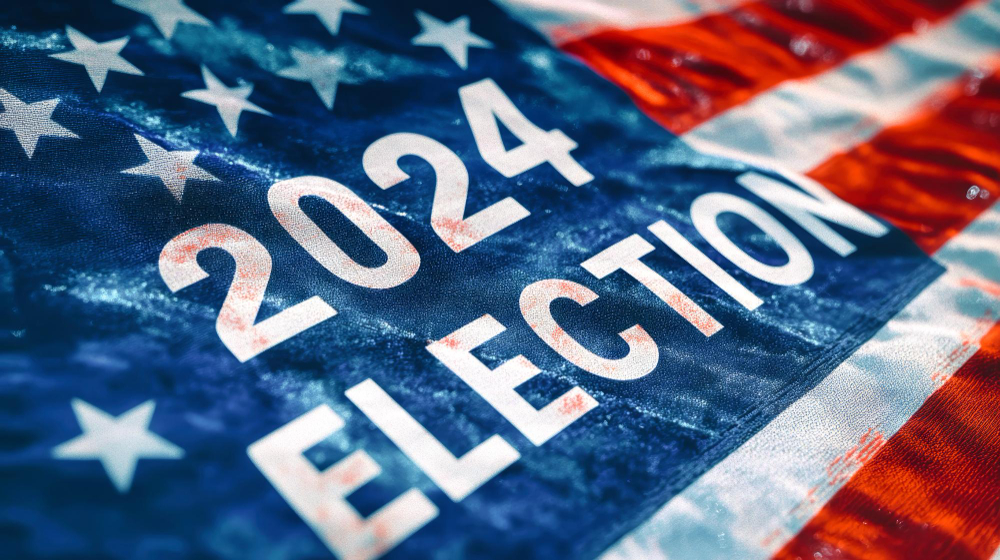On 5 November, Americans will elect their new president. But with just two weeks to go, neither Harris nor Trump has a decisive lead. In this Letter from Washington, Jeremy Shapiro discusses why the 2024 election race is so stable – and why no one can predict the outcome.
It is just over two weeks before the most consequential American presidential election since the last one and a nervous calm has fallen over Washington. This serenity derives not from any confidence about who will win; but rather from the comfort of knowing that there is almost nothing anyone can do about it. More precisely, two somewhat unexpected facts have emerged in the last few months of the campaign to promote this eerie calm.
The first is the shocking stability of the race. In the last six months, Washington has witnessed a deluge of events, all with the potential to impact the election’s outcome. But despite war in the Middle East, two assassination attempts against Donald Trump, and an entirely new candidate in Kamala Harris, the actual dynamics of the race have changed remarkably little. Line graphs of the evolution of polling averages over time look suspiciously flat, both before and after incumbent Joe Biden announced his intention to stand down as the Democratic presidential candidate. On 1 August, shortly after Harris entered the race, she led Trump in the 538.com national poll average by 1.2 points. By 18 October, this had risen to just 2.1 points. And the situation is similar in the swing states. In this environment, no one is too worried about an October surprise: we’ve already had several which had seemingly no impact at all.
Historically, this level of stability is unusual. The polls moved over 30 points in the 1976 election between Jimmy Carter and Gerald Ford; in August 1988, Michael Dukakis led the election by 17 points before losing the presidency to George H.W. Bush. Even the razor-thin 2000 election, where George W. Bush eventually won the narrowest of victories against Al Gore, saw frequent and significant shifts in the polling at state and national levels. But in today’s highly polarised environment, it seems that public opinion is not so malleable. Swing voters are increasingly a myth as, in every election, the polls seems to remain more stable. In 2024, it is now only a slight exaggeration to say we know how everyone in America will vote – we just don’t know who will show up (and whose votes will be counted, but more on that later). Presidential elections have become mostly exercises in turnout, rather than persuasion.
The second fact is that the polls show a tighter race than ever before. Nearly all national and swing-state polls show Trump and Harris in a statistical tie; their leads are well within the margin of error. Headlines commonly proclaim that Harris is “up by one point over Trump in Pennsylvania” – but from a statistical perspective, this is meaningless if the cited poll has a margin of error of four points. It is scientifically impossible to measure something as vast as the American electorate with this level of precision.
Since the advent of modern polling in the mid-20th century, the presidential polls have nearly always projected a winner by this point in the cycle, with the important exception of the 2000 election. Of course, they have not always been right; although they usually are. But more importantly, the sense of an expected winner would by now be shaping the conversation in Washington as the favoured party wandered government offices with measuring tapes, figuring out where to put their furniture. It is frustrating for today’s commentariat and office-seekers, but there are simply no analytical measures to show who will win on 5 November.
These two facts combined mean that this election outcome is a pure toss-up; and this will almost certainly remain the case throughout election day. Until then, there is no hope of knowing who will win and little hope of changing the dynamic. So, if persuasion is passé and events are irrelevant, what can still influence the election? For the electoral strategists among us – which, at this point in the electoral cycle, is everyone – only two avenues remain.
The first is to affect who votes. US elections have low participation rates relative to many other countries, indicating that there is still space to pull in the more apathetic voters. The polls are all based on so-called turnout models which predict not just how people will vote, but also who will vote. The latter prediction has recently proven fickle: voter participation hit record highs in both the 2016 and 2020 elections. But Trump is a turnout machine for both parties and much of the campaigns’ heated rhetoric, for example the accusation that Trump is a fascist or that Harris is a communist, seem more aimed at scaring people to the polls than changing their votes. The campaigns are also investing heavily in “turn-out operations” that seek to drive their voters, often literally, to the polls. The Harris campaign in particular has 2,500 staff members located in 353 offices across the seven swing states (Arizona, Georgia, Michigan, Nevada, North Carolina, Pennsylvania, Wisconsin) who are directing an army of volunteers to knock on doors and help people get to the ballot box.
The second and more novel channel of influence is to affect whose votes are counted. The only certainty in American electoral politics today is that Trump will challenge the election results if he loses. Indeed, he will probably challenge them if he wins. And in anticipation, the Republican party is preparing a sophisticated legal strategy. The party’s 2020 effort in this regard was ad-hoc, broadly incompetent, and led by a keystone cop team of lawyers: the courts rejected it wholesale, with the Trump team losing all 60 lawsuits. The Republican-dominated Supreme Court saw so little merit in the Trump team’s efforts that its judges refused to even hear the cases. This year, the Republicans have therefore planned a more sophisticated strategy to challenge state results, already proactively filing more than 130 lawsuits contesting various voting rules and procedures to use as a basis for further post-election suits. The Democrats have similarly prepared new defences; the lawfare phase of the election promises to be a wholly different battleground than in 2020.
So, the lawyers and the door-knockers in the swing states have a lot of work to do. But the rest of us in Washington can remain calm. The only problem is that everyone keeps asking us to predict the outcome. So, for the last time, there is no analytical or fact-based way to make that prediction. But Harris is going to win.
About the author:
Jeremy Shapiro is the research director of the European Council on Foreign Relations. His areas of focus include US foreign policy and transatlantic relations.


